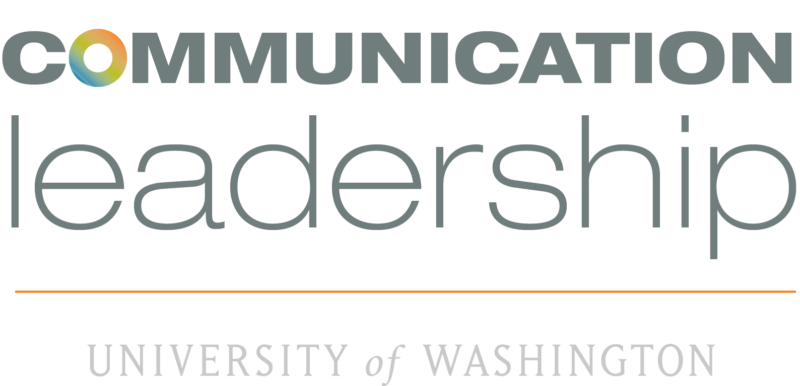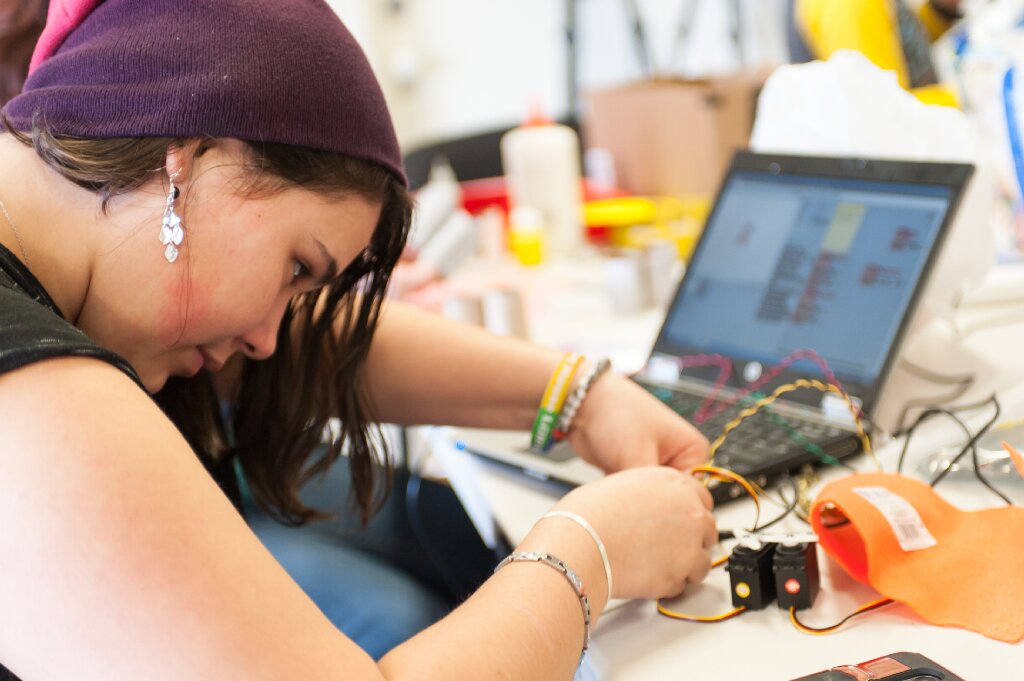
If you live in the Pacific Northwest, indigenous words and phrases are probably peppered throughout your speech without you even thinking about it. They pop up in place names like Alki, Cle Elum, Tumwater, and of course Seattle.
And while they might not mean much to you when you say them, many of these words contain valuable cultural knowledge.
Consider Lake Chelan. Its name is known to be derived from the Columbia-Wenatchee word “tsi-laan” meaning “deep water.” Now consider that Lake Chelan is the third deepest freshwater lake in the country, and among the top 30 in the world.
In other words, the Wenatchee really knew their lakes!
The first peoples that lived in this area were the innovative scientists and technologists of their time. They thrived because of their knowledge of the lands and how to harness its resources and systems to help themselves and their families survive. This knowledge is held in their languages.
But today indigenous communities around the world are in a race to save their languages, and the knowledge contained within them.
In 2011 United Nations General Ban Ki-Moon addressed this struggle to save languages as he opened the United Nations Permanent Forum on Indigenous Issues.
“One Indigenous language dies every two weeks,” Ban said.
The UN reported that at least 40% of the world’s estimated 6,700 languages are in danger of disappearing by 2040 — and the majority languages at risk belong to indigenous peoples.
The list of threatened languages includes almost all of the Native American languages found in the Pacific Northwest. The Endangered Languages Project, currently tracks seven active native languages across Washington area, and all seven are listed as “severely endangered.”
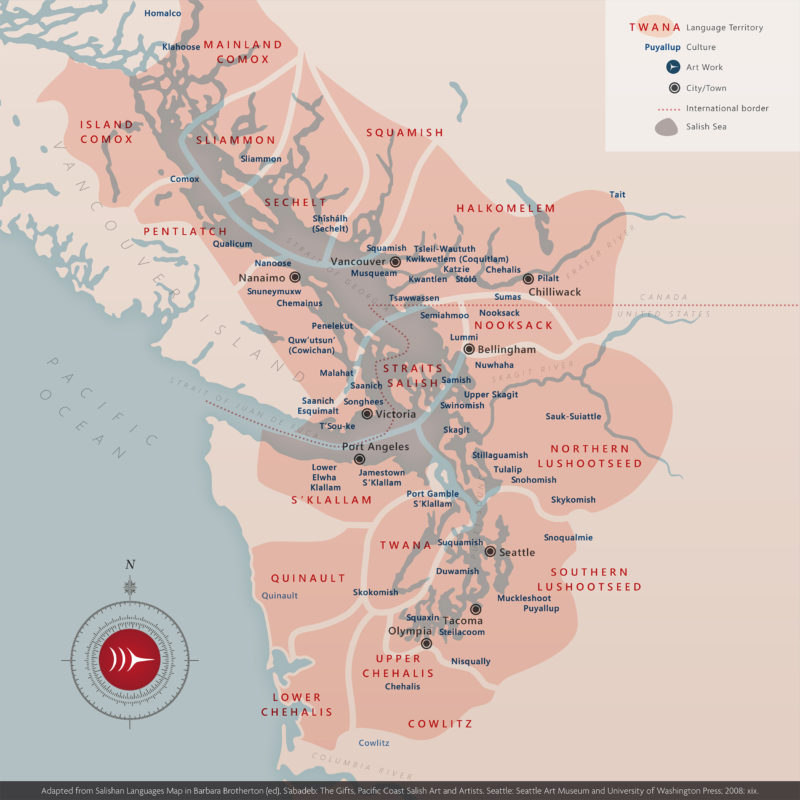
A quick glance at history makes it clear why. Throughout the 19th and 20th centuries, the United States had a policy to remove young native people from their cultures to be raised in boarding schools. These policies were deliberate efforts to stop native youth from learning about their cultures, traditions and languages.
It has only been in the past few decades that the U.S. government has taken steps to stop the erasure. In 1990, Congress passed the Native American Languages Act, which directed the President and US Government Agencies to protect, preserve, and promote Native American languages and their use. In 2006, the Esther Martinez Native American Languages Preservation Act passed, which funded Native American languages immersion and restoration programs.
However, after years of terrible injustices, mistreatment and academic erasure, many native languages have skipped multiple generations, leaving only a few surviving speakers. The last-speakers. Every time one of these languages die out, so do generations of wisdom.
Today, some people are trying to reverse the trend — with the help of technology. With increased internet access and mobile phone reception over the past decade has enabled more native communities to get online.
Native Americans are becoming increasingly tech-savvy and using this knowledge to capture, adapt, and revitalize their indigenous languages for the 21st Century.
Here are six ways Pacific Northwest Natives are using technology to save their languages.
Online Dictionaries
This is no small feat. Many indigenous languages did not become written languages until recently, since many were traditionally taught to the next generations orally, through songs, dances, and stories.
As more last-speakers have aged, many tribes across Washington have embarked on decades-long projects to document and preserve their communities’ languages and stories using modern recording software. Once recorded, the process of affirming spelling and definitions begins, often requiring a quorum of elders to agree for each word or phrase.
In 2010 the University of Washington celebrated the completion of the Sahaptin/Yakama Language Online Dictionary — a 20 year-long endeavor.
While this process may be time-consuming, the end result is not only a recording of spelling and grammar but the knowledge contained within the words. The dictionaries for many Northwest tribes are available via tribal websites.
Digital Keyboards
Many tribes are reckoning with the fact that in order to preserve their indigenous languages they must first also translate them into another language besides English — computer language.
For example. the Puyallup Tribe is digitizing the Twulshootseed Language for use today. The Twulshootseed Language is a member of the Lushootseed family and is the dialect of the Tacoma region. Similar to many other Native American languages, the Twulshootseed have sounds in their language that are difficult to represent using a normal Latin alphabet keyboard.
“There’s so many non-English sounds in Lushootseed that you cannot write phonetically,” said Amber Sterud-Hayward, who works in the tribe’s language program. “For example the Xw is, it’s a blowing sound. You can’t just write that down.”
The program developed a custom digital keyboard to allow their speakers the ability to not just see and read the language they are learning, but also to type in it. With a digital keyboard, someone can type a document or an email, send it to someone and the correct characters will show up for the recipient, even if the recipient doesn’t have that keyboard downloaded.
“The other nice thing about the keyboard is that you can actually change the font style. If I have a sentence typed out in Lushootseed, I can put it in Times New Roman, or Calibri, which looks pretty good actually,” she said.
Sterud-Hayward says this digital resource has helped to expand the presence of the Twushootseed language throughout the community by providing text for items like posters, learning materials and t-shirts.
“Making the language visible is a huge and important part of revitalization.”
Phone Apps
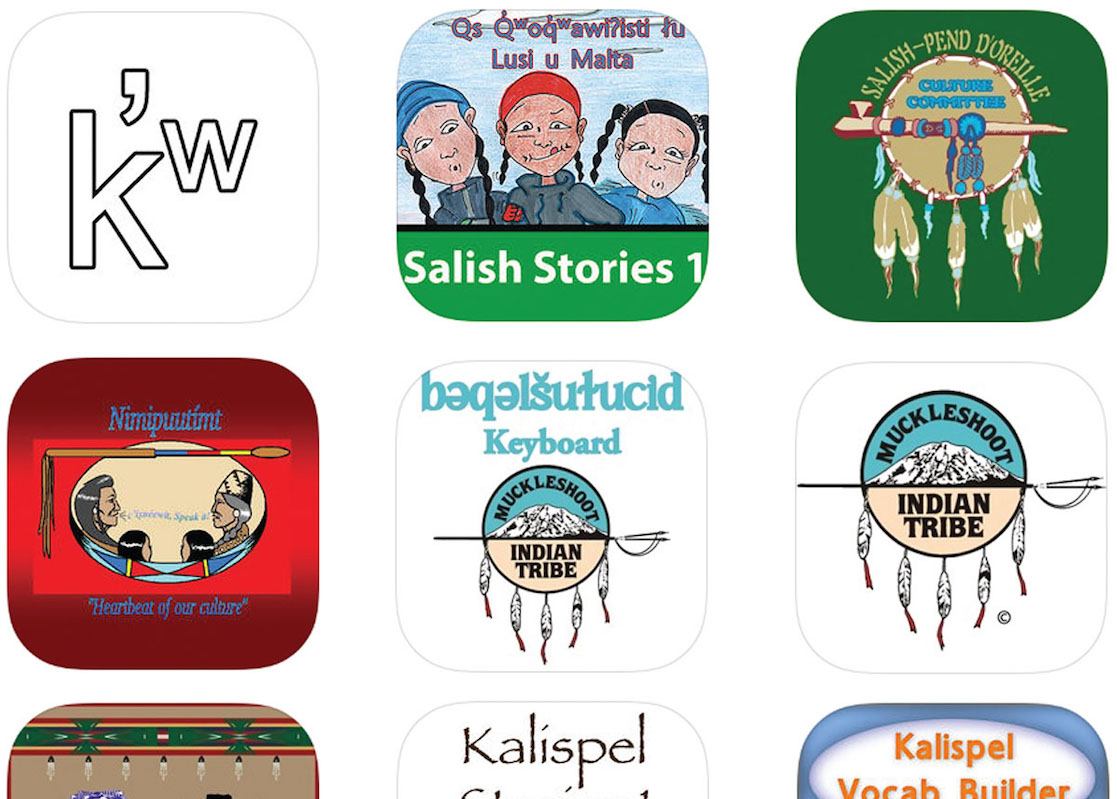
One of the major ways you can see language revitalization across native country is through the explosion of language apps available for download to various devices.
Today between the Apple Store and Google Play, language apps for five Washington native languages, are available for download — Salish, Lushootseed, Kalispel, Sahaptin/Yakama and Nez Perce.
While most are dictionary-like apps, a few, such as the Muckleshoot Translate It! app, offer interactive games and activities, helping to reach a growing younger demographic of language learners.
Social Media

Over the past decade, social media has become the go-to for basic communications (y’all know that aunt that uses Facebook to text). Most adults across the country visit a social media site at least once a day. Native Americans are no exception.
Native communities have turned to Facebook groups to share job postings, Reddit to debate cultural appropriation and Twitter to create an outlet for news from the rez.
Many of these activities have a language preservation element as well. A small, but impactful, example is the K’lallam Facebook Word of the Day. Every day the account, managed by the Lower Elwha K’lallam tribal language program, posts a word and its corresponding definition for its followers.
Another social platform heavily helping fight language loss is YouTube. Using the platform to share, short and simple videos, many native language preservationists are able to find their way to the ears of the next generation of speakers.
The Puyallup Tribal Language YouTube channel has dozens of videos ranging from common phrases to traditional stories, and all are done with fun and humor baked in.
Sterud-Hayward mentioned seeing the benefits of this platform during a recent trip to the Chief Leschi Tribal School where many kids recognized her from one of their more popular videos “How Are You Feeling? Lushootseed Emotions” which uses emojis to review emotions and feelings.
“We get kids all the time now copying phrases from these videos… they’re speaking Lushootseed. And that is the whole point! We want people to use our language in their everyday.
Virtual Classrooms
While it is definitely important to get the language out to the communities, the only way to combat the threat of extinction is to develop speakers and teachers.
For almost 30 years, the Twulshootseed language program has been releasing videos, apps and resources to teach nouns, numbers, and animals, but the tribe still wasn’t producing new speakers.
So a few years ago they contracted with language consultant, Zalmai Zahir, a linguist from University of Oregon who has spent years working with Northwest tribes. He worked with Sterud-Hayward and the team remotely from Oregon to help them start to develop “language domains” for Twulshootseed.
These “language-domains” include the process of creating self-narrations, an activity where one speaks Twulshootseed out-loud narrating each step they take to complete everyday activities — like making coffee or brushing teeth. The activity not only helps speakers practice, it’s also helping reclaim language in actual day-to-day environments.
Over a few weeks of dedicating at least an hour a day to their language, the team noticed that they were making progress and eventually worked from self-narration to conversational speech.
Within a couple of months they knew that they wanted to offer this resource to their community. Starting last year, in 2018, the team implemented their first virtual language classes using Microsoft Teams, enabling motivated tribal members to participate, regardless of their physical location.
“It was great. We produced three certified teachers out of that first round,” Sterud-Haward said. “And these online classes are producing speakers, which are [defined as] people that are using the language for more than an hour a day.”
Today the Puyallup Language Program offers 10 classes a quarter, showing the potential that virtual classrooms have for helping tribes connect with their increasingly dispersed populations.
Weaving technology with traditional storytelling
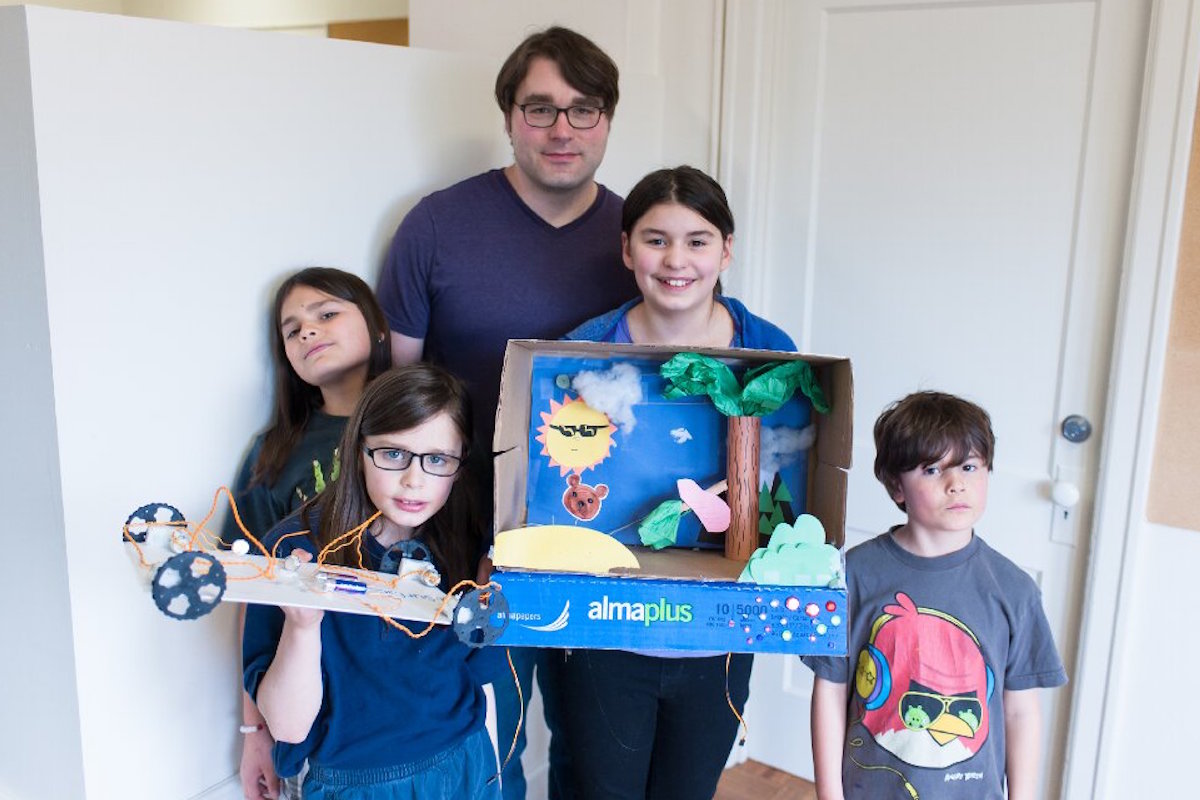
While in the process of creating speakers, it’s also very important to keep the tradition of storytelling alive. Language revitalization is one step in the revival of culture. To be successful it should also include revitalization of cultural art and traditional storytelling, subjects often intertwined. The art and stories of every native community are different, but each represent a history contained within its words and symbols. Almost all Native American communities have employed storytelling to share wisdom and teach the next generation how to navigate their path on this earth.
Increasingly tribes are adding interactive storytelling activities to their websites and phone apps. For example, the Salish Storybooks App offers illustrated and interactive stories, in both English and Salish for young readers.
While apps are helping bring these stories to an increasingly urban native population, a major factor lacking is the community to share them with. Clubs like Native Girls Code, bring together native teen and tween girls from across King County through the exploration of technology and traditional knowledge, are helping to combat this issue.
Since Native Girl Code caters to urban native youth, many participants lack opportunities to connect with their homelands or cultures. This is a concern facing many native youths across the country. About 60% of Native Americans reside in urban areas. Many do not have opportunities to visit their ancestral homelands or participate in cultural activities.
Shawn Peterson, the co-founder of the Native Girls Code club, said most schools across King County only have a few native students per school.
Often the girls in her program are the only native youth at their school.
“It’s important for urban kids to have a relationship with their indigenous identity,” Peterson said. “With [Native Girls Code] were not always focused on the Western science, we’re also thinking about science in native cultural teachings and practices, like weaving and beading, or foods and medicines. This is a space where young women can be exposed to cultural things and make them feel good about being native women. Ultimately our goal is to build their confidence and help prepare them for the tech world that doesn’t look or think like them.”
Last year the club joined forces with a University of Washington and National Science Foundation program called Tech Tales. The girls and their families participated in a series of workshops designed to help families to explore science, engineering, and native culture together.
The families spent time with Duwamish storyteller Roger Fernandes discussing the historical significance of traditional storytelling within native communities. Next, he worked with the families to discuss and record their own traditional family stories. Together, the families created physical representations of a scene from their story, in the form of a robotic diorama. The Native Girls Code participants were given a chance to show off their coding skills to bring the robotic dioramas of their family story scene to life.
“Together they were able to create something, using coding and art and native culture, to revive and pass down their traditional family stories,” Peterson said.
This focus on language revitalization isn’t just a feel-good endeavor. By saving these languages, humanity can benefit from the knowledge contained therein.
That knowledge can help us connect with our natural world, which might be the key to helping us save it. University of Washington’s Climate Impact Group is already combining examples of Indigenous knowledge with Western science to create technical resources to assess climate impacts and responses for native communities and non-native communities alike.
Current generations can also learn how to rebuild community. Revitalizing this knowledge can give Native Youth a sense of belonging and a chance to fight the devastating statistics across native country.
Numerous studies, including those conducted by the National Indian Education Association (NIEA) and the US Department of Education, show that Native American/Alaska Native/Native Hawaiian students who are engaged in cultural learning practices have much better socio-emotional well being. With many across Native Country facing dire health and education statistics, the benefits of cultural immersion take on new meaning. Language revitalization has the potential to save the next generation, so for that reason alone we should embrace and encourage it as much as possible.
“Our Twulshootseed foundation is to be kind, be helpful, be sharing,” Sterud-Hayward said. “We are working to make Lushootseed [language] a normal thing so that we can bring our ancestors’ ways back, and their views back and their ways of thinking back.”
This story was written as part of The Seattle Globalist’s 2019 Emerging Tech Fellowship, in partnership with the University of Washington’s Communication Leadership master’s program.
